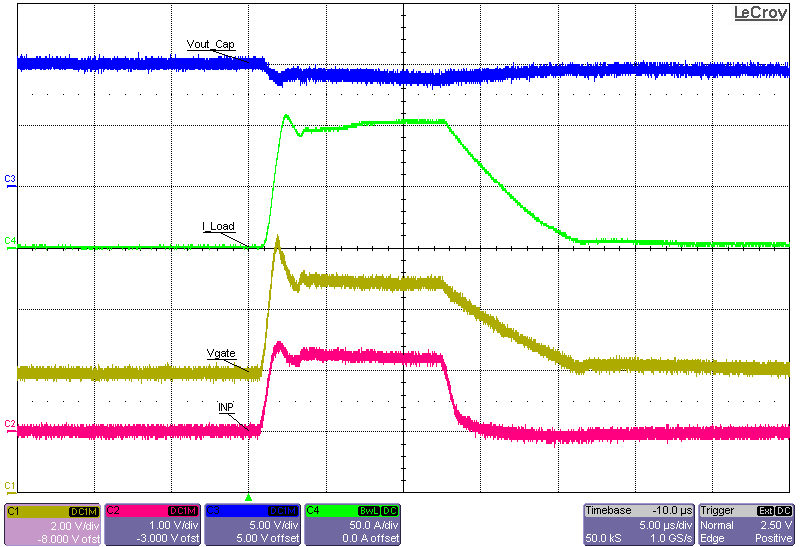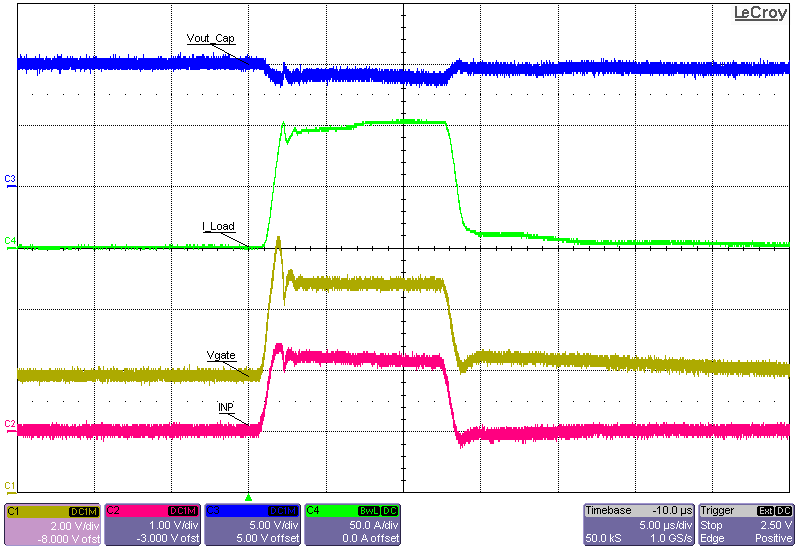TIDT293 October 2022
6.1 Fast Thermal Failure
Fast thermal failure occurs usually in high-voltage operation when the SOA rating of the MOSFET is exceeded. Generally, the FET (Q2) shorts, the sense resistor (R21) opens, the gate resistor (R14) is damaged, and the THS3120 op amp (U4) fails.
The following waveform shows a capture of a full-range step after damage to the load switch driver U4.
 Figure 6-1 1-A to 100-A Step, 10-V
Output, Maximum Slew Rate, Damaged U4
Figure 6-1 1-A to 100-A Step, 10-V
Output, Maximum Slew Rate, Damaged U4The following image shows the same response after replacing U4.
 Figure 6-2 1-A to 100-A Step, 10-V
Output, Maximum Slew Rate, Replaced U4
Figure 6-2 1-A to 100-A Step, 10-V
Output, Maximum Slew Rate, Replaced U4